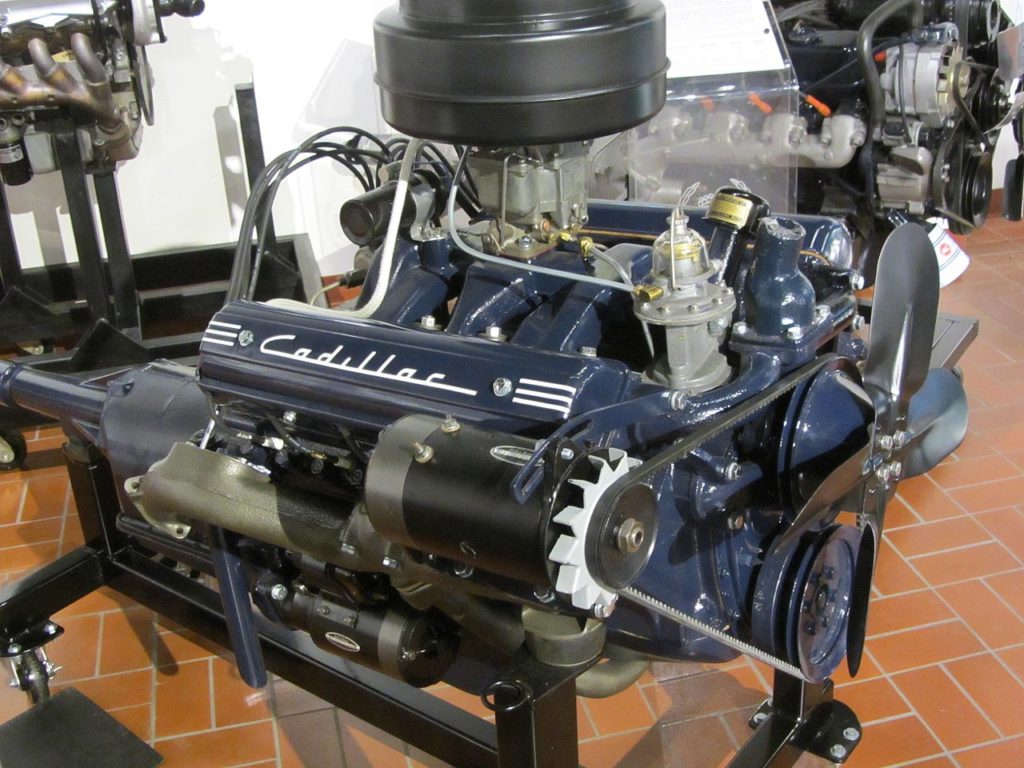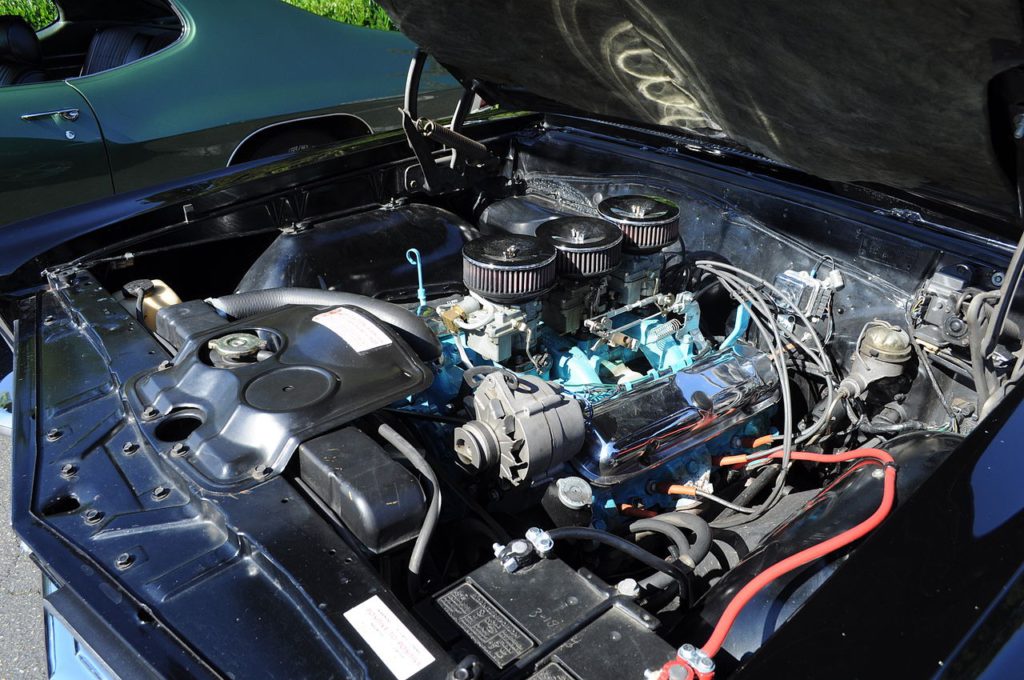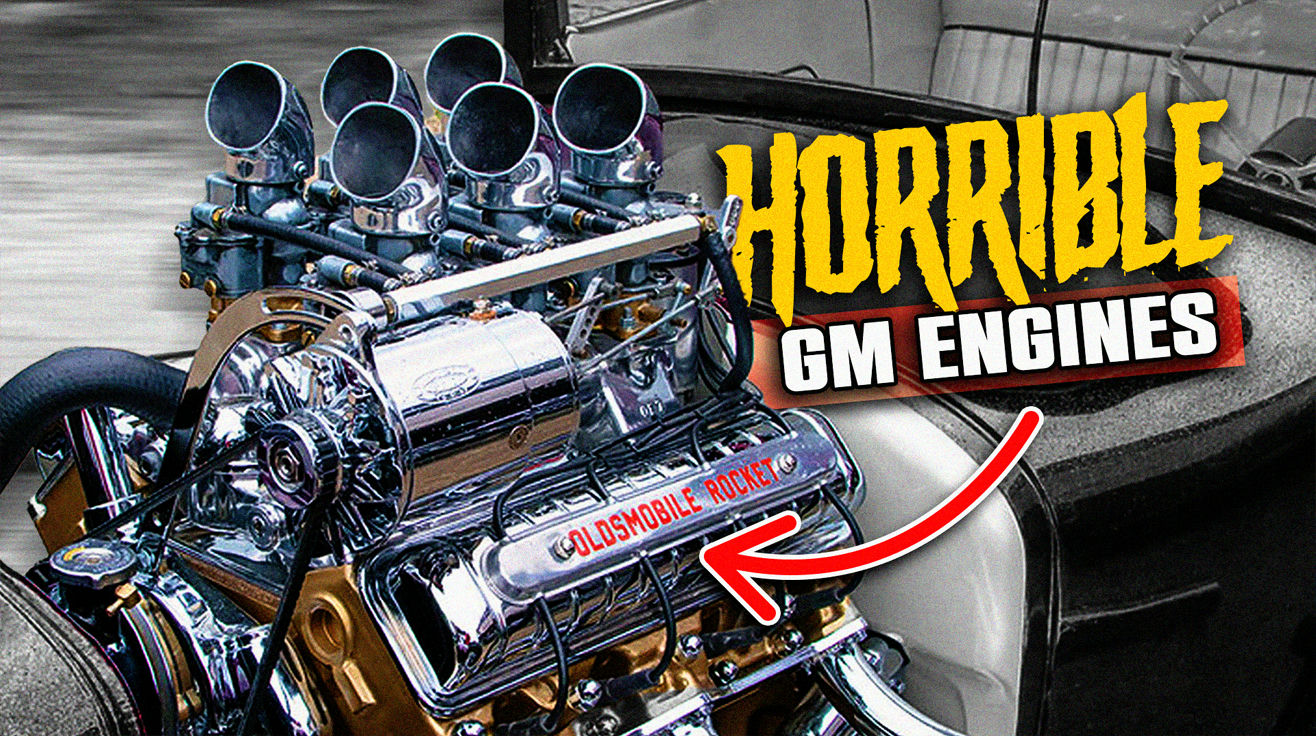Ever wandered through an automotive museum and wondered about the engines that didn’t make it to the glass cases? GM’s engineering archives bulge with blueprints for mechanical marvels that straddled the line between brilliance and madness. Some became industry legends while others self-destructed like rockstars who couldn’t handle fame.
This mechanical soap opera reveals how America’s automotive titan swung from revolutionary breakthroughs to spectacular failures—a high-octane history lesson in what happens when engineers get blank checks and management gets nervous.
9. Cadillac V8-6-4

If bold engineering had a poster child, the V8-6-4 would star as a warning. This 368-cubic-inch (6.0L) pioneer tried variable displacement decades before tech could handle it. The 1981 computer systems (with less power than today’s smartwatch) controlled solenoids that shut down cylinders. The result? A mechanical Jekyll and Hyde that stumbled more than it soared.
It made just 140 horsepower with 265 lb-ft of torque and survived a single model year. Think of it as trying surgery while wearing oven mitts. The idea was smart but the tech wasn’t ready. Two decades later, modern computers made cylinder deactivation common. The V8-6-4 wasn’t wrong—just way too early to the efficiency party.
8. Aurora 4.0L V8

As Japanese luxury brands dominated the 90s with technical prowess, GM fired back with the Aurora V8. This 4.0L DOHC 32-valve aluminum masterpiece packed 250 horsepower with a 10.3:1 compression ratio. It hit peak power at a sports-car-like 6,500 RPM—shocking for an Oldsmobile and impressing even import fans.
Introduced in 1995, this engine tried to beat Lexus and Infiniti at their own game. It stood out in Oldsmobile’s fading lineup like finding a craft coffee shop in a mall food court. The Aurora engine brought unexpected sophistication but arrived too late to save its division. Its tech-forward approach showed what Detroit could do when properly motivated.
7. Oldsmobile Turbo Rocket V8

While competitors super-sized engines in the early ’60s, Olds zigged by turbocharging a tiny V8. The 215-cubic-inch Turbo Rocket hit the perfect 1:1 ratio—215 cubic inches, 215 horsepower. With a compression ratio of 10.25:1, it needed special water-methanol injection to prevent self-destruction. It was boost before boost was cool.
Only 9,600 lucky Jetfire owners experienced this marvel before reliability issues killed it. The Turbo Rocket was like giving a smartphone to someone from 1962. Too advanced for its era, this tiny powerhouse previewed today’s turbo revolution decades early. It showed why being first isn’t always best, but innovation never goes to waste. GM’s willingness to gamble on unproven technology—like the Oldsmobile Turbo Rocket with water-methanol injection or early digital fuel injection—shows that not every innovation sticks. Explore a full rundown of car innovations that disappeared for very good reason.
6. Chevrolet ZL1 427

Some engines move cars. The ZL1 427 created legends. Officially rated at 430 horsepower (about as honest as a TikTok filter), actual dyno tests showed over 525 horsepower—enough to make Camaros break physics. This aluminum big block wonder required premium race fuel and added a wallet-emptying $4,160 to the price tag. That’s nearly double the cost of the base car.
Born from Can-Am racing technology, the ZL1 wasn’t just rare—it was automotive unobtanium. Today, ZL1-equipped vehicles fetch prices that make crypto investors jealous. GM’s moonshot with pistons created perhaps the most worshipped engine in Chevy history. When your engine costs more than the car it powers, you know it’s something special.
5. LV2 5.0L V8 with Digital Fuel Injection

The shift from carburetors to fuel injection was like switching from DVDs to streaming—simple in theory, messy in practice. GM’s LV2 5.0L V8 pioneered this digital frontier using Bendix Bosch digital EFI to manage fuel delivery. Despite the fancy tech, it made just 145 horsepower and 240 lb-ft of torque—numbers that wouldn’t impress today’s hot hatchbacks.
Found only in 1980-1981 Cadillac models like the DeVille and Eldorado, this 305-cubic-inch engine struggled with first-gen digital headaches. It was the awkward teen phase of engine management—unpredictable but necessary. This unglamorous stepping stone eventually led to today’s sophisticated engine computers, proving that even modest beginnings deserve credit in tech evolution.
4. Pontiac 301 Turbo

The 1970s energy crisis hit Detroit like a bad breakup after a wild party. Pontiac’s 301 Turbo was their rebound relationship—exciting on dating apps but disappointing in person. This small-block with a Garrett TB305 turbocharger made 210 horsepower and 345 lb-ft of torque. Good stats, bad execution.
With just 7 PSI boost setting, the turbo lag felt eternal. Driving a 1980-1981 Trans Am Turbo meant planning passes before starting your trip. Pontiac even warned against full-throttle driving—like selling gaming PCs with warnings not to play games. This desperate attempt showed how Detroit struggled when MPG suddenly mattered more than MPH.
3. GMC Twin 6 V12

Imagine 1960s America with expanding interstates where trucks needed serious muscle. The GMC Twin Six wasn’t just an engine—it was industrial architecture with pistons. This 702-cubic-inch behemoth merged two V6 engines into one mechanical monster. It made 275 horsepower and crushed dyno machines with 565 lb-ft of torque.
This masterpiece of excess ruled highways from 1960 to 1965, pulling loads that would make modern pickups question their life choices. It’s like bringing a flamethrower to toast marshmallows—gloriously over-engineered. The Twin Six influenced future heavy-duty engines while showcasing America’s “bigger is better” philosophy at its finest.
2. Shortstar LX5 V6

Some engines disappear despite real innovation—like indie films lost among superhero movies. The Shortstar LX5 V6 marked Oldsmobile’s final tech achievement—a 3.5-liter powerplant derived from Cadillac’s Northstar V8. Making 215 horsepower with a 6,500 RPM redline that begged for spirited driving, this DOHC design deserved more fame than it got.
Launched in 1999 as Oldsmobile circled the drain, the Shortstar showed what could’ve saved the brand. Its 234 lb-ft of torque flowed through advanced valvetrain tech while living in its V8 sibling’s shadow. It was the middle child of GM engines—smart and capable but overlooked at family reunions while everyone fawned over the flashier kids.
1. Chevy 267 Small Block V8

The 1970s fuel crisis forced Detroit to make small engines from big-block blueprints. The Chevy 267 appeared in 1979 as the runt of the legendary small block family. This 4.4L mini-V8 made just 115 to 125 horsepower with torque (215 lb-ft) that today’s economy cars would mock.
With its 3.50-inch bore and 3.48-inch stroke, this smallest Chevy V8 lasted until 1982 before mercy ended its production. It was like watching a UFC fighter compete in gymnastics—technically possible but painful to witness. The 267 showed how American automakers struggled with efficiency, finally admitting the horsepower party was over, leaving Detroit with an engineering hangover that lasted years. The Chevy 267 was a muscle car engine in name only—a V8 with no muscle, shunned by hot rodders and mechanics alike. For more examples of General Motors’ most outlandish powertrain experiments, check out some of the weirdest GM muscle cars only true gearheads will recognize.





























